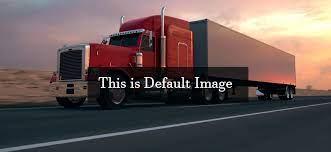Everything You Need To Know About LTL Freight Tracking
The world of logistics is adopting more of manufacturing’s lean methods. That surely includes LTL trucking & tracking.
In fact, you may argue that LTL trucking evolved from the lean concept of “best practices." The same holds true for each of the 3 major over-the-road shipment classes. Each caters an exact best purpose that is suited for a certain goal. These categories are parcel, less-than-truckload and full truckload respectively.
Irrespective of which class of trucking we are talking about, the immediate query is always the same: “where is my freight?” And without any hesitation, of the 3 classes of freight, LTL is the most difficult to track.
What’s LTL Carrier tracking & why does it matter?
LTL tracking is the procedure of employing consignment-specific info to determine the present location of a load of freight. As such, LTL tracking is helpful in forecasting the estimated time of arrival of freight.
Perhaps you are pondering what is the big deal about Less-than-truckload tracking. It is all about timing. Most LTL carriers offer online tracking. But because of the nature of LTL freight, LTL schedules can lack accuracy. LTL tracking screens freights & lends precision to a delivery process that can be imprecise.
The accurate timing of deliveries is becoming more imperative as the logistic industry falls more & more into lockstep with manufacturing trends.
How to track an LTL shipment?
There’re many ways to track an LTL consignment, and they all involve a number. The key to tracking your LTL freight is finding out which exact number is allocated to your consignment. They typical numbers you’ll require to reference to track your LTL fright include the following:
Bill of lading number (BOL): A BOL is a form that records and describes the freight being shipped from one location to another. In Less-than-truckload, this is crucial since fright involves several stops & changes.
Progressive number: The carrier employs the PRO number to recognize freight when they pick up a consignment. As this number is allocated by the carrier – and barcodes are scanned into a carrier’s system – the PRO number is a pretty dependable way to track & trace the up-to-date checked status of your LTL fright.
Purchase order number: PO numbers are standard in the entire business sphere, not just freight. Every purchase order gets assigned number by a customer. You should include a PO number on all documents surrounding a particular order.
We have witnessed the critical role LTL freight plays in the value stream of commerce. The next time you discover yourself dealing with indecision of tracking LTL, use the best LTL Freight Tracking software out there.
Source from: https://www.great-articles.com/everything-you-need-to-know-about-ltl-freight-tracking/








Comments